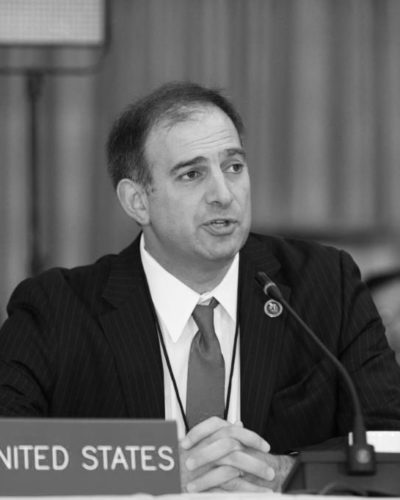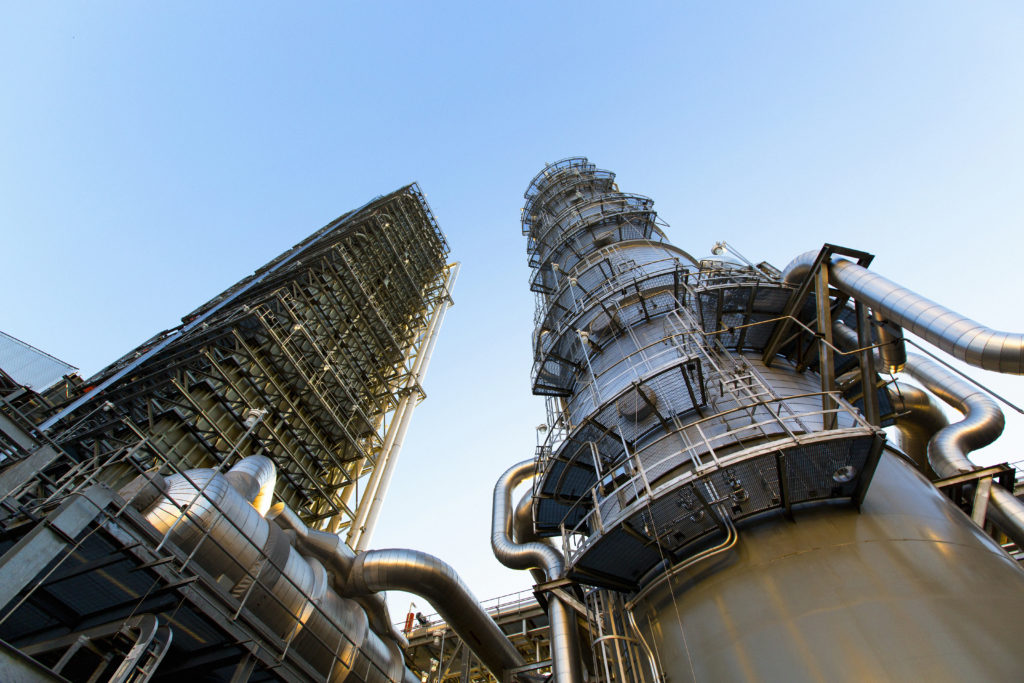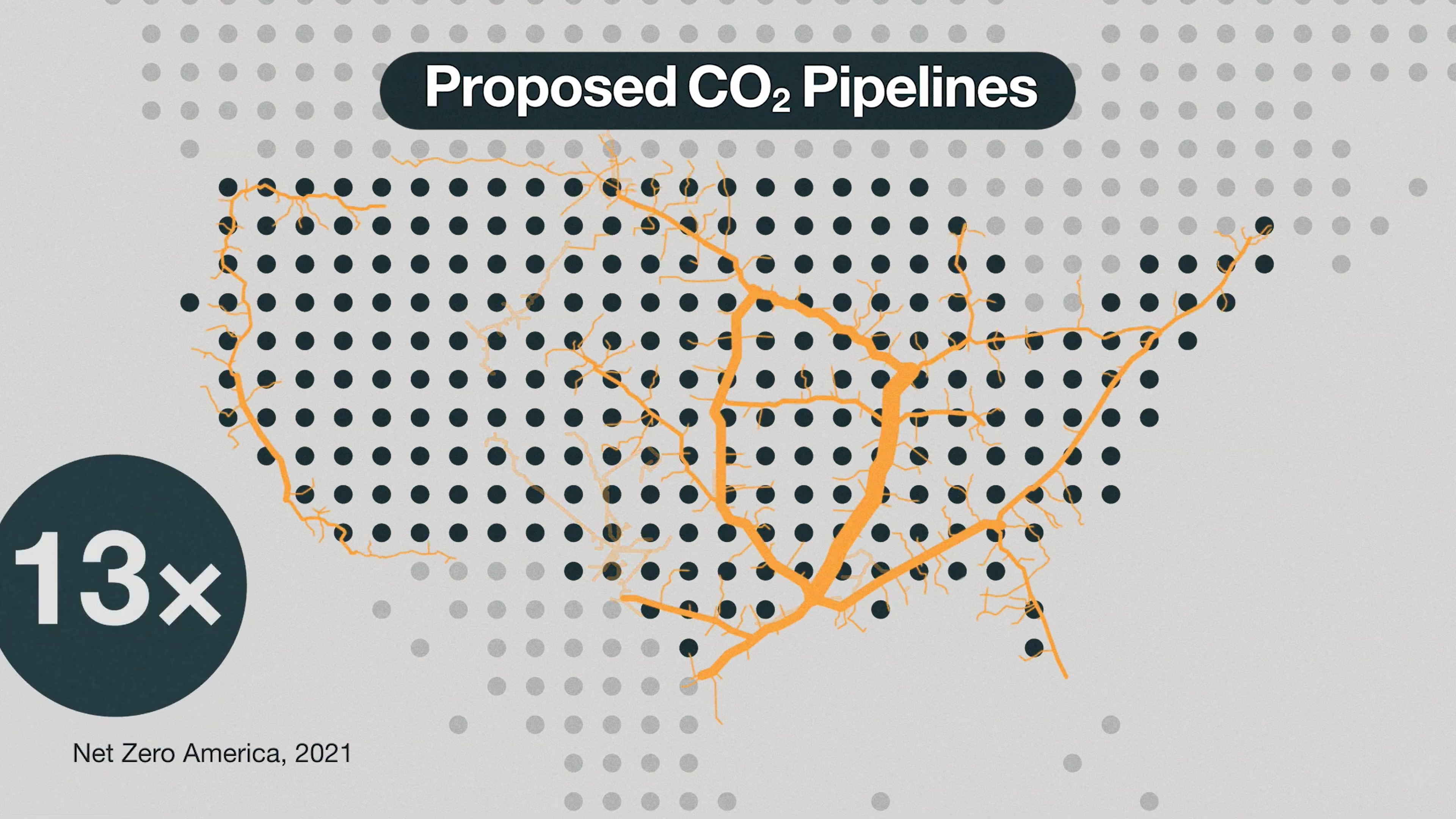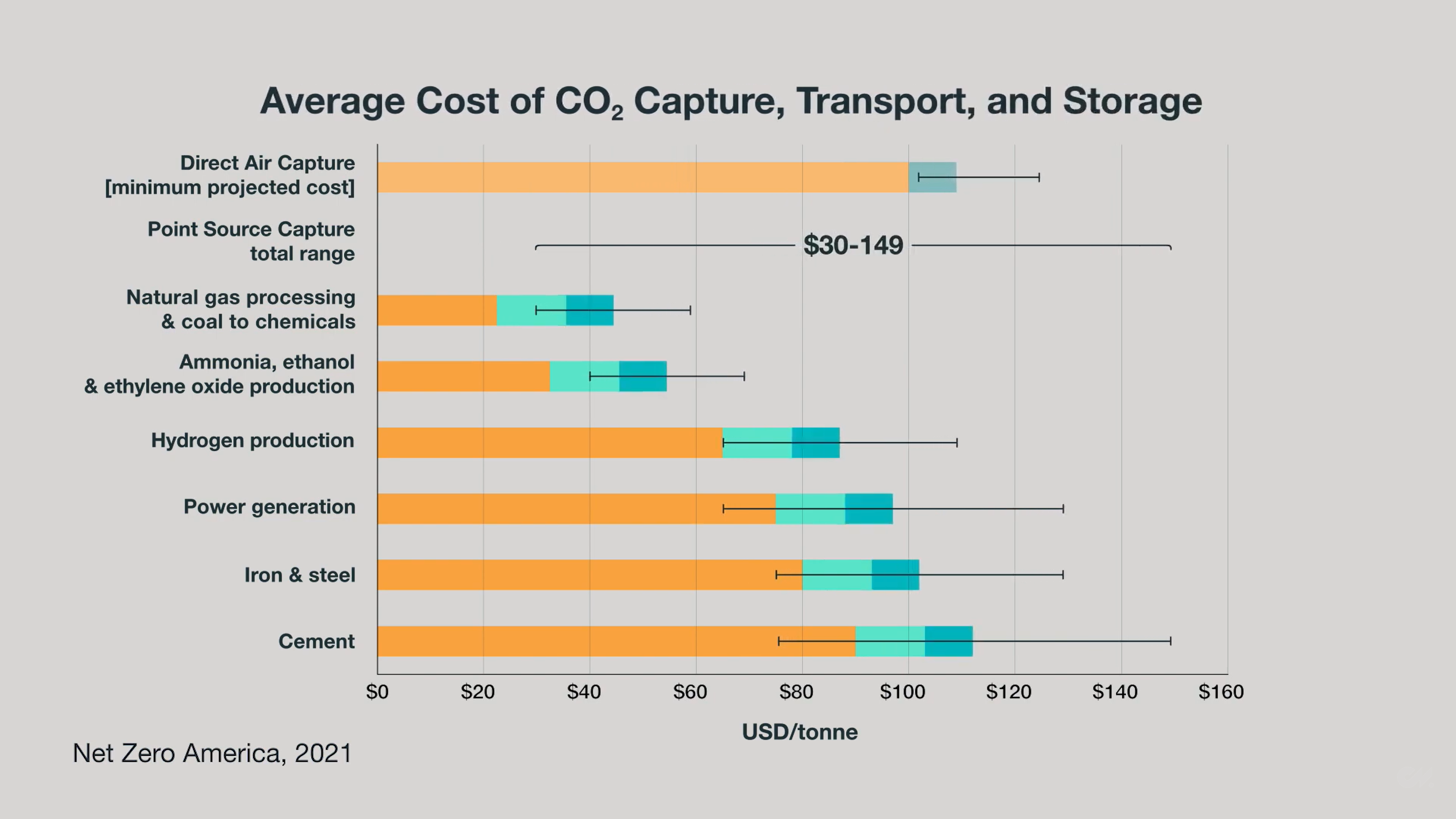Series 2: Technologies Episode 6
December 6, 2021
Carbon Dioxide Removal: Carbon Capture and Storage, Part II
Featured Experts

Julio Friedmann
Senior Research Scholar at the Center on Global Energy Policy at Columbia University SIPA

Julio Friedmann
Senior Research Scholar at the Center on Global Energy Policy at Columbia University SIPA
Dr. Julio Friedmann is a Senior Research Scholar at the Center on Global Energy Policy at Columbia University SIPA and was previously the Principal Deputy Assistant Secretary for the Office of Fossil Energy at the Department of Energy.
In this Episode
Carbon Capture and Storage (CCS) has the potential to remove billions of tons of CO2 from the atmosphere annually, which we will likely need to reach global climate targets.
In the first of our two-part series on CCS, we explored how carbon capture technology works, and the scale and cost at which it could be employed. But capturing CO2 is only the first step. We also need to keep that captured CO2 from returning to the atmosphere, permanently.
In part II of our series on Carbon Capture and Storage, we explore what to do with CO2 once it has been captured, its potential for utilization, and the logistics of transporting and storing carbon dioxide.
Related Media:


Technologies Ep 5
Carbon Dioxide Removal: Carbon Capture and Storage, Part I
What if we could remove the carbon we have emitted into the atmosphere? Can we capture our CO2 emissions before they are even released? In Part I of our two-part Carbon Capture and Storage series, our host Dr. Ozak Esu and two internationally-recognized carbon


Climate Now: Aug 6, 2021
Carbon Sequestration with Julio Friedmann
In order to limit global warming to 1.5 degrees Celsius, we must (in addition to reducing emissions) capture carbon and permanently store it where it cannot be released, a process known as carbon sequestration. So, what is currently being done to advance carbo


Climate Now: Jun 18, 2021
Carbon Capture 101 with Howard Herzog
According to the IPCC’s 2018 report, carbon capture and storage – in addition to a significant reduction in emissions – will be necessary in order to limit global warming to 1.5 degrees above pre-industrial levels. But what is carbon capture,
Episode Transcript
Dr. Ozak Esu (Host): Carbon capture technology offers the promise of turning back the clock on climate change by removing carbon dioxide from the atmosphere and preventing further emissions. But capturing CO2 before it’s emitted, or pulling CO2 out of the air, is only the first step in this process. Then we have to figure out what to do with all that gas.
This video is the second in our two-part investigation of carbon capture and storage, one of several techniques we are reviewing in our special series on carbon dioxide removal (CDR) strategies. In our first video, we introduced point source capture in which carbon dioxide is sequestered directly from sources of emissions, and direct air capture (DAC), where it is scrubbed from the ambient atmosphere.
Today, we are going to look at what we do with CO2 once it is captured, and a good place to start is considering the scale of this problem. How much CO2 are we dealing with?

To avoid the most catastrophic effects of climate change, we need to not only reduce emissions, but also remove at least 10 billion tonnes of CO2 already in the atmosphere every year [1]. To put that number into context, if we pulled 10 billion tons of CO2 out of the atmosphere and stored it in pressurized tanker trucks at typical storage pressure (1000 times the atmospheric pressure at sea level [2]), we would need a line of tanker trucks that wrapped around the Earth more than 80 times [3]. And we would need to do that EVERY YEAR.
So what DO we do with all the CO2 we need to sequester? We have a couple of options:
- We can use it to create useful products. This is known as carbon capture and utilization, or CCU.
- Or we can bury it deep in the earth’s crust. This is referred to as carbon capture and storage, or sequestration, and is abbreviated CCS.
Let’s consider utilization first.
Today, about 105 million tons of CO2 is sold annually for industrial use [4]. Most of the CO2, about 70-80 million tonnes, is used by the oil and gas industry for enhanced oil recovery, which we explain in our first video on carbon capture. The remainder is used in food and beverage production, cooling, water treatment and greenhouse agriculture [4].
There are also several emerging technologies for CO2 utilization. These include conversion of CO2 and hydrogen to produce a synthetic hydrocarbon fuel, replacement of hydrocarbons in polymers and industrial chemicals, and production of concrete and materials that use the mineralized form of CO2, called carbonate [4]. All of these technologies are in early stages of development, and are currently able to convert a few thousand tons of CO2 to products annually. And their near-term potential climate benefit is likely limited [5].
Not all of these applications permanently sequester CO2. Synthetic fuels, which hold the largest market growth potential, re-release CO2 into the atmosphere after utilization [5]. Thus, while they could prevent the release of new emissions, they are not actually a carbon dioxide removal technology [6].
Of the major emerging technologies, only those that use mineralized CO2, like cement curing, also permanently store the CO2. A 2019 report [5] determined that even with significant investment and changes to regulatory policy, the market for mineralized CO2 could optimistically scale up to about 10 million tons of carbon dioxide use annually, which would barely make a dent in the 10 billion tons of CO2 we need to be removing [7].
So, while more CO2 utilization may be viable, CO2 storage is going to be a necessary component of reaching key climate goals. Let’s take a closer look at this option.
CO2 Storage
We’ll start with the good news first: there is no shortage of places to store CO2 underground, as Dr. Julio Friedmann, Senior Research Scholar at Columbia University explains.
Dr. Julio Friedmann:
“We are not limited by the geology. This is a common misunderstanding. It is widely known in our community that the global storage capacity of conventional stuff is between 10 and 20 trillion tons of storage [8]. If you include the unconventional options, you have 10,000 trillion tons of storage [9]. So we’re not limited on the geology.”

If we continue emitting greenhouse gases at our current rate, this volume could sequester all anthropogenic CO2 emissions for hundreds of years [7]. Let’s break that down a little bit.
Conventional geologic storage involves injecting CO2 into underground rock formations that are well suited to trapping large volumes of liquids or gases. Ideal rock types are those that are highly porous, and that have large connectivity between pores. Examples of these types of formations are salt-water filled aquifers, called saline formations, or depleted oil and gas reservoirs [10]. In these types of deposits, CO2 would be stored in the same way oil and gas is stored naturally before it is extracted [11].
There are a few types of unconventional geologic storage. One is in formations composed of less porous sedimentary rocks, like shales or un-mineable coal seams. The other is in rock types that are reactive with CO2, like basalt. These kinds of rocks will form carbon-bearing minerals that ensure permanent CO2 storage [12] in a process called mineralization.
So what would it take to use all of this geologic storage space? Well, more good news about CCS:
Dr. Julio Friedmann:
“There is no technical problem to this. We can build a CO2 pipeline from a steel mill to a storage site. We know because we have 5,000 miles of CO2 pipeline in the United States. They’ve been regulated since 1972, by the department of transportation. We can permit CO2 storage Wells. The EPA has been in that business since 2010, and the CO2 storage systems work, we have been storing CO2 underground for 50 years without incident, without a leak, without a problem. So we know how to do it. We’ve been doing it well, the technologies exist. Those are not the barriers. The barriers are us. Do we choose to do this or not?”
If we do choose to do this however, there are logistical hurdles we need to overcome – namely, building the infrastructure and policy framework so that CCS can operate on the scale of billions of tons of CO2 storage annually.
Most point-sources of CO2, like factories and power plants, are hundreds or thousands of miles from geologic formations that are well-suited for storage. We can use ships to transport CO2 over distances on the scale of thousands of kilometers, with transport costs ranging from about 25 to 50 US dollars per tonne [13]. But for CO2 transport over land or over shorter distances, pipelines are the most cost-effective option [13].
Building a network of pipelines that would connect all point source locations to injection sites across a continent would require enormous upfront investment. For example, for the United States to reach its net-zero goals, they would need to expand the existing pipeline network about 13 times to be able to transport the necessary billions of tons of CO2 annually [14].
The upfront capital investment for this would be 170-230 billion USD to create the CO2 pipeline infrastructure. An additional $13 billion would be needed for early stage development of storage infrastructure. This includes stakeholder engagement, site characterization, and appraisal and permitting of appropriate storage basins [14].

So how does this translate to the cost of removing one ton of CO2 from the atmosphere? It depends on the policies in place for how point source users pay to access the pipelines. If capital and maintenance costs of the pipeline network were shared equally across all point source users, it would cost about 10 to 16 US dollars per tonne of CO2 transported [14].
If, instead, CO2 producers have to pay per kilometer that their product travels in the pipeline, these costs could become prohibitively expensive for more remote point source sites, and the US would not be able to sequester as much CO2. This is why a policy framework has to develop in tandem with the infrastructure framework.
COST
CCS is not going to be economically viable in most cases without some kind of financial incentive. To see why, let’s take a look at the total costs of CCS, as well as potential sources of revenue to cover those costs. Here, we are illustrating the cost of capturing CO2 from each major industrial source, and the lowest potential costs of Direct Air Capture.
As we discussed in our video on carbon capture, point source capture costs between 15 and 120 US dollars per tonne of captured CO2 [4], with the averages for each sector shown here. Add to that the lowest estimated transport costs of 10 to 16 dollars per tonne, and the cost of storage, estimated to be around 5-13 dollars per tonne [14]. So, the TOTAL, the cost of CCS from point source capture to underground storage is about 30 to 149US dollars, with averages shown for each sector on this chart.

Direct air capture can be located anywhere and so does not REQUIRE transport costs. But the most optimistic estimates for DAC with storage, would still cost 100 US dollars per tonne [15], and given the cost of direct air capture today, could be as much as 1000 dollars per tonne.
Now let’s compare this to potential sources of REVENUE that could be used to offset these costs.
Today, enhanced oil recovery provides the largest revenue for CO2 capture, with gas and oil companies paying about 14 to 28 dollars per ton of CO2 [16, 17]. While sequestering CO2 for enhanced oil recovery does have a net CO2 reduction benefit, it is far from ideal to use CCS as a method to produce more greenhouse gas emissions. And, as the energy sector becomes increasingly decarbonized, the demand for enhanced oil recovery will diminish – along with that source of revenue.
Another potential source of revenue are carbon credits, which allow individuals and corporations to buy offsets for their own emissions. These are currently sold for 3 to 5 US dollars per ton of CO2 [18, 19].
Government incentives are one way to close any remaining cost gaps of capture, transport and storage. Currently the US is one of only a handful of nations that co-finance CCS with tax credits or subsidies [20]. The US Section 45Q tax credit will increase annually until 2026, when companies will receive 50 USD per ton of co2 captured and stored, or 35 if it is used in conjunction with enhanced oil recovery [21]. This is not enough to make most CCS projects financially viable, particularly in the largest emitting sectors: energy, and steel and cement manufacturing [22,23].

So what needs to happen? For Carbon Capture and Storage to reach the necessary capacity of billions of tons a year in the next three decades, significant political commitment is necessary.
Dr. Julio Friedmann:
“Carbon capture is born as a collaborative effort. It is cross sectoral. You have to go from the power sector to geoscience. There’s many regulatory bodies involved in it. You need are building large stuff. So there’s public acceptance, the forefront. The finance is lumpy and expensive upfront. So you need to get partnerships going on this.”
It will take strong government support to ensure that all the moving parts of this cross-sectoral endeavor come together. This includes significant upfront investment and a legislative commitment to streamline permitting and oversight policies [24, 25]. While the potential for Carbon Capture and Storage is enormous, until such policies are put in place, CCS will not happen at the scale we need to reach our climate goals.
To learn more about this topic, check out our Carbon Capture and Storage part 1 video and our full length podcast with Dr. Julio Friedmann. And to sign up for new releases and more, visit ClimateNow.com.
Thanks and see you next time.
Ep2.6 CCS Part 2 Citations
- 1:27 National Academies of Sciences, Engineering, and Medicine (2019) Negative Emissions Technologies and Reliable Sequestration: A Research Agenda. Washington, DC: The National Academies Press. https://doi.org/10.17226/25259
- 1:39 IPCC Special Report (2005) Carbon dioxide capture and storage. Metz, B., et al., Eds. Cambridge University Press. https://www.ipcc.ch/report/carbon-dioxide-capture-and-storage/. CO2 is typically transported at ‘high pressures’: 9.6-15.2MPa (p. 181-184). At typical surface temperatures (0-30oC), CO2 density at this pressure range is 800-1000kg/m3 (p. 387).
- 1:43 Large tanker trucks have a maximum capacity of 43,900L (11,600 gallons), and are 13m long. Earth’s circumference is ~40,000km, or 3 million tanker trucks. At an average density of 900kg/m3, 1 tonne of CO2 = 1,110 L CO2. Therefore, one tanker holds about 40 tonnes of CO2, so 10 billion tons of CO2 requires 250 million tankers. http://www.engineering-truck.com/blog/typical-tanker-truck-dimensions/ and https://www.trailersoftexas.com/blog/how-much-does-a-tank-trailer-hold–25081
- 2:19, 2:40, 3:02, 10:10 International Energy Agency (2020). Special Report on Carbon Capture Utilisation and Storage: CCUS in clean energy transitions. IEA Energy Technology Perspectives 2020. https://www.iea.org/reports/ccus-in-clean-energy-transitions – p.109: in total 230 MtCO2/yr is used in industry globally, but of that, 125 MtCO2/yr is used by the fertilizer industry, which can produce and use their own CO2, so they do not need to buy it externally.
- 3:19, 3:31, 4:06 International Energy Agency (2019) Putting CO2 to Use: Creating value from emissions. https://www.iea.org/reports/putting-co2-to-use
- 3:39 Hepburn C., et al. (2019) The technological and economic prospects for CO2 utilization and removal. Nature, 575, 87-97. https://doi.org/10.1038/s41586-019-1681-6
- 4:13: Ritchie, H. and Roser, M. Our world in data: CO2 emissions. Published online (no date). Accessed online October 29, 2021 from https://ourworldindata.org/co2-emissions
- 4:54 Dooley, J.J. (2013) Estimating the supply and demand for deep geologic CO2 storage capacity over the course of the 21st Century: A meta-analysis of the literature. Energy Procedia 37:5141-5150. https://doi.org/10.1016/j.egypro.2013.06.429
- 4:59 Kelemen, P., et al. (2019) An overview of the status and challenges of CO2 storage in minerals and geological formations. Frontiers in Climate 1(9). https://doi.org/10.3389/fclim.2019.00009
- 5:35 Benson, S.M. and Cole, D.R. (2008) CO2 sequestration in deep sedimentary formations. Elements 4, 325-331. https://doi.org/10.2113/gselements.4.5.325
- 5:44 Global CCS Institute Special Report (2016) Global Status of CCS: Introduction to Industrial Carbon Capture and Storage. p. 4.
- 6:09 Jones, K.B. and Blondes, M.S. (2015) Carbon dioxide storage in unconventional reservoirs workshop: summary of recommendations. USGS Open-File Report 2015-1079, 10p. https://doi.org/10.3133/ofr20151079
- 7:38 Roussanaly, S., et al. (2021) At what pressure shall CO2 be transported by ship? An in-depth cost comparison of 7 and 15 barg shipping. Energies, 14, 5635. https://doi.org/10.3390/en14185635
- 8:11, 8:28, 9:07, 10:28 Larson, E., et al. (2021) Net-Zero America: Potential Pathways, Infrastructure, and Impacts. Final Report, Princeton University, Princeton, NJ. Slides 205-222. https://netzeroamerica.princeton.edu/the-report
- 10:56 Keith, D. et al. (2018) A process for capturing CO2 from the atmosphere. Joule 2, 1573-1594. https://doi.org/10.1016/j.joule.2018.05.006
- 11:22 Edwards, R.W.J., M.A. Celia (2018) Infrastructure to enable deployment of carbon capture, utilization, and storage in the United States. Proceedings of the National Academy of Sciences, 115(38), E8815-E8824. https://doi.org/10.1073/pnas.1806504115. CO2 bought for ~40% of oil price (USD/barrel), and oil has ranged from ~$36-70/barrel in the last 12 months
- 11:22 Petroleum & other liquids: U.S. crude oil first purchase price. U.S. Energy Information Administration. Published online (no date). Accessed November 1, 2021. https://www.eia.gov/dnav/pet/hist/LeafHandler.ashx?n=pet&s=f000000__3&f=m
- 12:00 Holder, M. Carbon offset prices set to increase tenfold by 2030. GreenBiz. Published June 14, 2021. Accessed November 1, 2021. https://www.greenbiz.com/article/carbon-offset-prices-set-increase-tenfold-2030
- 12:00 Trove Research (2021). Future Demand, Supply and Prices for Voluntary Carbon Credits – Keeping the Balance. University College London, Trove Research, Liebreich Associates, June 1, 2021. p. 3. https://trove-research.com/research-and-insight/carbon-credit-demand-supply-and-prices-june-2021/
- 12:19 Rassool et al. (2021) CCS in the circular carbon economy: Policy and regulatory recommendations. Global CCS Institute Report. https://www.globalccsinstitute.com/resources/publications-reports-research/ccs-in-the-circular-carbon-economy-policy-and-regulatory-recommendations/
- 12:37 The Tax Credit for Carbon Sequestration (Section 45Q) https://crsreports.congress.gov/product/pdf/IF/IF11455
- 12:49 Global CO2 emissions by sector, 2019. International Energy Agency. Published online August 10, 2021. Accessed November 4, 2021. https://www.iea.org/data-and-statistics/charts/global-co2-emissions-by-sector-2019
- 12:49 International Energy Agency (2020). Iron and Steel Technology Roadmap, IEA, Paris. https://www.iea.org/reports/iron-and-steel-technology-roadmap
- 13:44 Webb, R. Carbon storage in the bipartisan infrastructure bill. Climate Law Blog: Sabin Center for Climate Change Law. Published August 10, 2021, Accessed November 1, 2021 from http://blogs.law.columbia.edu/climatechange/2021/08/10/carbon-storage-in-the-bipartisan-infrastructure-bill/
- 13:44 Andrews, J. Who owns pore space for geologic carbon sequestration? JDSupra. Published January 20, 2021. Accessed October 28, 2021. https://www.jdsupra.com/legalnews/who-owns-pore-space-for-geologic-carbon-2984045/